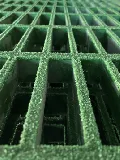loading...
- No. 9, Xingyuan South Street, Dongwaihuan Road, Zaoqiang County, Hengshui, Hebei, China
- admin@zjcomposites.com
- +86 15097380338
- Welcome to visit our website!
Advancements in Glass Fiber Reinforced Polymer Rebar for Enhanced Structural Applications
Glass Fiber Reinforced Polymer Rebar A Sustainable Innovation in Construction
In recent years, advancements in construction materials have emphasized sustainability and durability, with Glass Fiber Reinforced Polymer (GFRP) rebar emerging as a revolutionary alternative to traditional steel reinforcement bars. GFRP rebar is composed of glass fibers embedded in a polymer matrix, providing a lightweight, corrosion-resistant solution that has the potential to transform the construction industry.
One of the most significant advantages of GFRP rebar is its exceptional resistance to corrosion. Unlike steel, which is prone to rust when exposed to moisture and other harsh environmental conditions, GFRP rebar maintains its structural integrity even in aggressive environments. This property makes GFRP an ideal choice for construction projects in coastal or industrial areas where high humidity, chlorides, and other corrosive agents are prevalent. By significantly reducing the risk of structural deterioration, GFRP rebar can extend the lifespan of concrete structures and result in lower maintenance costs over time.
Glass Fiber Reinforced Polymer Rebar A Sustainable Innovation in Construction
Another prominent characteristic of GFRP rebar is its high tensile strength. When subjected to stress, GFRP rebar exhibits superior performance compared to many conventional materials, allowing for the construction of stronger and more resilient structures. Additionally, GFRP is non-magnetic and does not conduct electricity, making it particularly valuable in applications where electrical interference is a concern. This attribute is important in infrastructures such as hospitals, airports, and data centers, where preventing electromagnetic interference is critical.
glass fiber reinforced polymer rebar

Sustainability is at the forefront of GFRP technology. The materials used in GFRP can be sourced from renewable resources, and the production process often generates lower carbon emissions compared to traditional steel manufacturing. By opting for GFRP rebar, construction companies can enhance their green building practices and contribute to environmentally responsible construction methodologies. This aligns with global initiatives aimed at reducing the carbon footprint of the construction industry.
Furthermore, GFRP rebar showcases excellent fatigue resistance, ensuring performance stability over numerous load cycles. This makes GFRP particularly attractive for use in structures subjected to repeated loading, such as bridges and pavements. The durability of GFRP allows it to maintain its mechanical properties over time, reducing the frequency of repairs and replacements and thereby providing a more cost-effective solution in the long run.
Despite its many advantages, the adoption of GFRP rebar is not without challenges. Initially, its higher upfront cost compared to traditional steel rebars can deter some construction projects. However, project leaders are increasingly recognizing the long-term economic benefits and savings generated by reduced maintenance and replacement needs. The rise of GFRP in the market is also supported by a growing regulatory framework, with more building codes and standards being developed to accommodate the use of composite materials in construction.
In conclusion, Glass Fiber Reinforced Polymer rebar presents a forward-thinking alternative to traditional steel reinforcement bars, offering benefits that encompass durability, sustainability, and design flexibility. As the construction industry continues to evolve, embracing innovative materials like GFRP will be essential for building resilient infrastructures that meet the needs of modern society while promoting environmental stewardship. With ongoing research and advancements in GFRP technology, it is likely that we will see an increase in its application across diverse construction projects, solidifying its role as a staple material in the future of construction.
-
GRP Structures: The Future of Lightweight, High-Performance EngineeringNewsJun.20,2025
-
FRP Water Tank: High-Performance Storage for Corrosive and Clean Water SystemsNewsJun.20,2025
-
FRP Square Tube: The New Industry Standard for Chemical and Structural ApplicationsNewsJun.20,2025
-
FRP Pultruded Profiles: The Ultimate Choice for Lightweight Structural StrengthNewsJun.20,2025
-
FRP Handrails: The Safer, Smarter, and Stronger Choice for Modern InfrastructureNewsJun.20,2025
-
FRP Grating: The Smart Solution for Durable, Lightweight Industrial FlooringNewsJun.20,2025
-
Why Choose a Galvanized Water Tank for Your Storage NeedsNewsMay.21,2025
